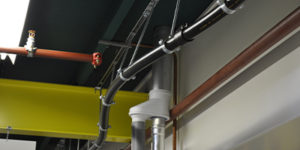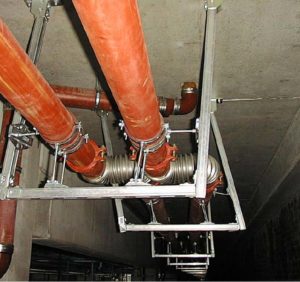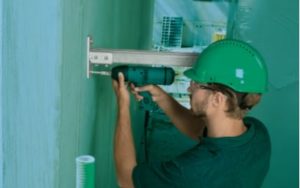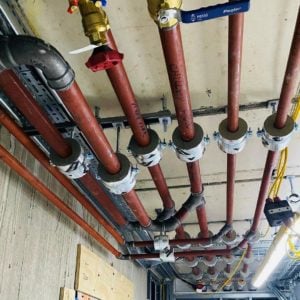 Alan Sharman, Technical Adviser, has worked at Walraven for 5 years. During his time with the company he has visited construction sites to provide technical advice and solution recommendations to contractors.
Alan Sharman, Technical Adviser, has worked at Walraven for 5 years. During his time with the company he has visited construction sites to provide technical advice and solution recommendations to contractors.
During site visits, Alan has encountered a number of problems with M&E installations, and these are the most common installation issues he has come across:
 Thermal expansion and contraction of pipework is one of the largest dynamic forces acting upon piped services. If it is overlooked, and pipes are incorrectly anchored into place, the consequences can be extremely destructive.
Thermal expansion and contraction of pipework is one of the largest dynamic forces acting upon piped services. If it is overlooked, and pipes are incorrectly anchored into place, the consequences can be extremely destructive.
The forces created by thermal expansion can be large enough to cause pipe bowing, buckling, damage pumps and valves, and even fracture the pipe or damage the structure of the building.
 “One of the most common mistakes made is that expansion bellows are installed without appropriate anchor points throughout the system. A combination of fixed anchor points, pipe guides and/or expansion devices should be installed alongside the bellows to create an effective system.”
“One of the most common mistakes made is that expansion bellows are installed without appropriate anchor points throughout the system. A combination of fixed anchor points, pipe guides and/or expansion devices should be installed alongside the bellows to create an effective system.”
You can read more about how to effectively deal with pipe expansion in our guide.
Mechanical & Resin Anchors are a small but very important part of an installation. If the anchor fails, the entire installation can collapse. Incorrect anchor selection is one of the most common causes of anchor failure, alongside incorrect installation and specification changes.
 According to BS8539:2012 code of practice, there are six factors that must be taken into account when selecting an anchor fixing:
According to BS8539:2012 code of practice, there are six factors that must be taken into account when selecting an anchor fixing:
“The most common problem we see is insufficient or incorrect consideration of loadings and forces, resulting in the selection of the wrong anchor.”
Our DesignFix anchor software is a free tool to help you select the correct anchor for your installation.
 With the Government drive towards net-zero carbon emissions by 2050, raising thermal efficiency of buildings is now a key priority. Insulated pipe supports are used on HVAC systems to maintain thermal performance.
With the Government drive towards net-zero carbon emissions by 2050, raising thermal efficiency of buildings is now a key priority. Insulated pipe supports are used on HVAC systems to maintain thermal performance.
Historically, wood blocks have been a common method of insulating pipe supports. However, the BS5970 code of practice was updated in 2012 to state that “wooden pipe supports should not be used” because they do not offer adequate thermal bridging or vapour barrier.
Despite this, it is not uncommon for us to visit construction sites today, and still see wood blocks being installed.
Phenolic insulation is now a widely available alternative to wood blocks which offers far superior thermal insulating properties. “We would recommend the use of phenolic foam over the alternatives as it has a high insulation value in comparison to alternative pipe supports.”
Installation methods and procedures are important to ensure that products ultimately perform their role effectively. This applies to everything from anchors to phenolic pipe supports and fire stops. A product incorrectly installed can result in failure to get sign-off on the installation and costly rework and ultimately lead to failure of the installation if not corrected.
Some of the issues we have seen on site include:
It’s important to follow manufacturers guidelines shown in installation instructions provided with the products, and for ETA approved products, additional and detailed installation instructions are included in the ETA documentation to ensure that when correctly installed, the product performs as expected.
“All too often the installation instructions are overlooked for speed, or because there is assumed knowledge on how products should be installed.”
Taking a little time up front to train installers in the correct installation methods can pay off in the long run. If in doubt, many manufacturers offer onsite toolbox talks and training to install products correctly.
Find out more about our products and services for M&E Contractors